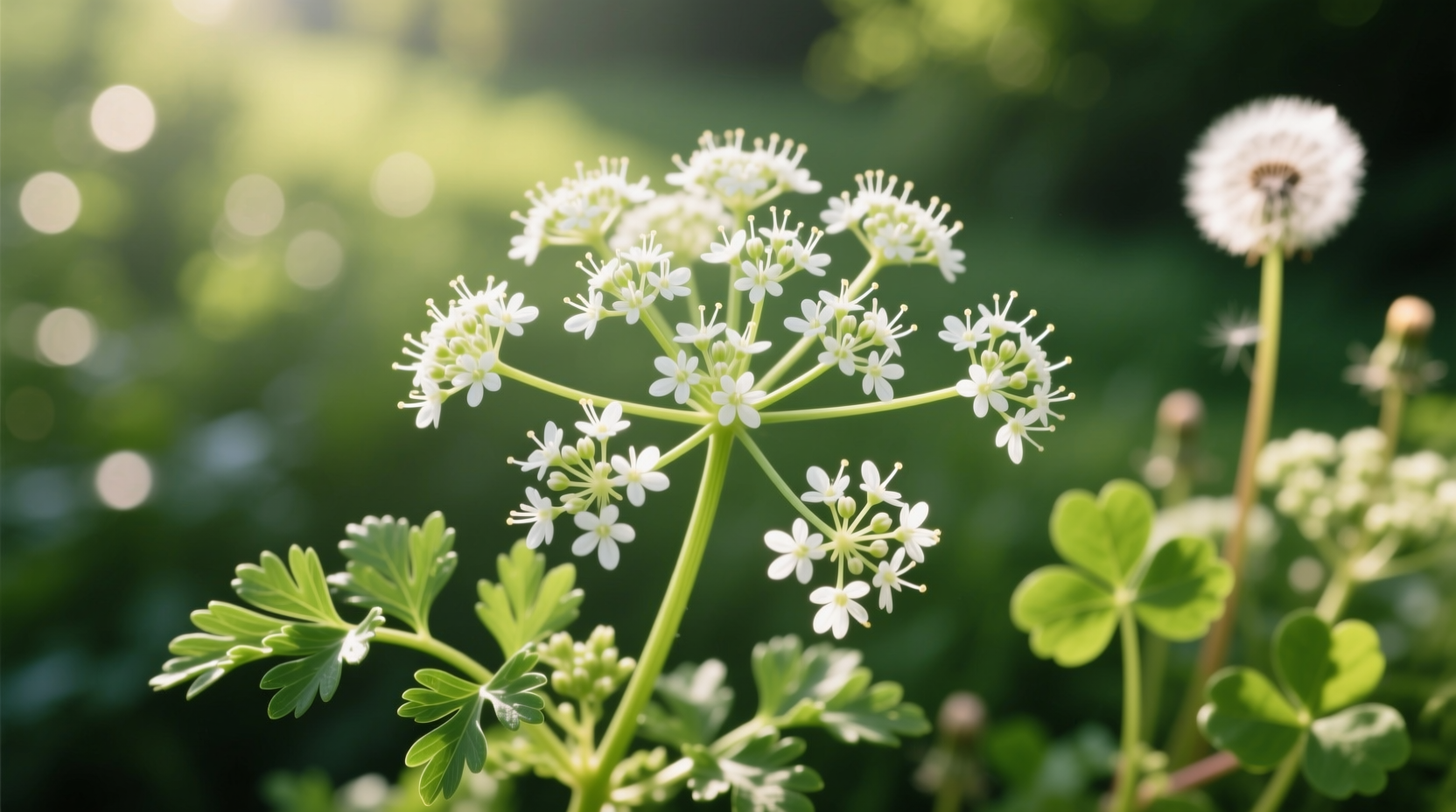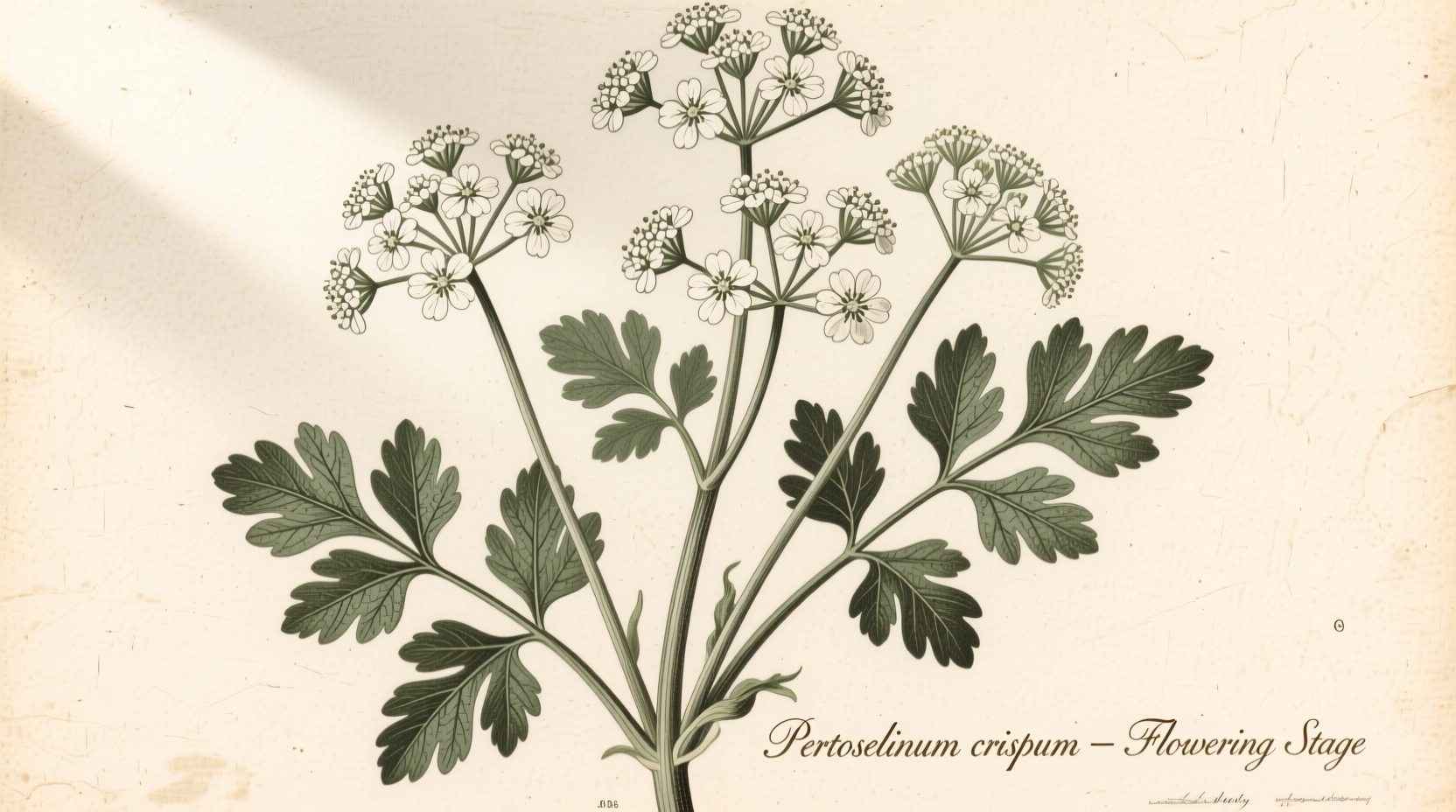Discover exactly what happens when your parsley plant sends up those delicate white flower clusters and how to maximize your harvest. Whether you're growing parsley in containers on your balcony or in a backyard garden, understanding this critical growth phase prevents wasted effort and ensures you get the most flavorful leaves possible.
The Immediate Impact of Parsley Flowering on Your Harvest
When you spot the first tiny flower buds forming at the center of your parsley plant, several immediate changes begin:
- Flavor transformation: Essential oil composition shifts, reducing apiol (the compound giving parsley its fresh flavor) by up to 60% according to University of Minnesota Extension
- Texture change: Leaves become tougher and more fibrous as the plant matures
- Growth pattern shift: Energy redirects from leaf production to flower and seed development
This biological process, called bolting, isn't a problem to fix but rather a natural stage in parsley's lifecycle. Recognizing these changes helps you make informed decisions about your harvest strategy.
| Pre-Flowering Parsley | Post-Flowering Parsley |
|---|---|
| High apiol content (fresh flavor) | Reduced apiol, increased bitter compounds |
| Continuous leaf production | Minimal new leaf growth |
| Soft, tender leaf texture | Tougher, more fibrous leaves |
| Ideal for culinary use | Better suited for seed collection |
Why Your Parsley Decided to Flower Now
Parsley's flowering isn't random—it follows precise biological triggers that vary by growing conditions. Understanding these factors helps predict and potentially delay bolting:
Temperature Thresholds That Trigger Bolting
Research from University of Wisconsin Horticulture shows parsley initiates flowering when soil temperatures consistently exceed 75°F (24°C) for 10+ consecutive days. This explains why container-grown parsley often bolts earlier than garden plants—pots heat up faster in direct sun.
The Daylight Factor in Parsley Flowering
As a biennial plant, parsley uses day length as its primary flowering signal. When daylight reaches 14 hours (typically late spring to early summer), the plant receives its biological cue to complete its lifecycle. This photoperiod sensitivity means indoor growers using artificial lighting can delay flowering by maintaining shorter light cycles.
Stress Factors That Accelerate Flowering
Several environmental stressors can trigger premature bolting:
- Inconsistent watering (drought stress)
- Nutrient deficiencies, particularly nitrogen
- Crowded growing conditions
- Root-bound container plants
Your Action Plan When Parsley Flowers
Don't panic when you spot flower stalks—you still have options depending on your gardening goals. Follow this decision tree based on your primary objective:
If You Want Maximum Culinary Harvest
- Immediately cut flower stalks at soil level using sharp pruners
- Increase nitrogen-rich fertilizer applications (fish emulsion works well)
- Provide afternoon shade if temperatures exceed 80°F (27°C)
- Harvest outer leaves regularly to stimulate new growth
This approach typically extends productive leaf growth for 4-6 weeks, according to field trials documented by the Royal Horticultural Society.
If You're Saving Seeds for Next Season
Allow 2-3 flower heads to fully develop while removing others to concentrate energy. The USDA Agricultural Research Service recommends waiting until seed heads turn brown (about 6-8 weeks after flowering) before harvesting seeds for optimal viability.
Parsley Flowering Timeline: What to Expect Week by Week
Understanding the progression helps you time your interventions correctly:
| Stage | Visual Indicators | Action Required |
|---|---|---|
| Pre-Flowering (Weeks 1-2) | Central stalk elongates, tiny buds form | Begin shade protection, increase watering |
| Early Flowering (Week 3) | White flower clusters visible | Cut flower stalks if extending harvest |
| Mid Flowering (Weeks 4-5) | Flowers fully open, pollinators active | Decide: continue harvesting or save seeds |
| Seed Development (Weeks 6-8) | Flowers fade, seed heads form | Reduce watering if saving seeds |
Climate-Specific Flowering Management
Your geographic location significantly impacts parsley flowering patterns. The Oregon State University Extension categorizes parsley flowering behavior by climate zone:
- Cool climates (Zones 3-5): Typically flowers in second year; minimal intervention needed
- Moderate climates (Zones 6-8): May flower late first year; requires strategic harvesting
- Warm climates (Zones 9-11): Often flowers first year; plant as cool-season annual
In warmer regions, treat parsley as a cool-season annual rather than a biennial. Succession planting every 4-6 weeks ensures continuous harvest without encountering flowering plants.
Maximizing Your Parsley Harvest Through Flowering Season
Implement these proven techniques to get the most from your parsley regardless of flowering stage:
The Strategic Harvesting Method
Instead of cutting entire stems, harvest individual outer leaves while leaving the inner growth point intact. This 'cut-and-come-again' approach works even during early flowering stages and can extend productive harvest by 30% according to Penn State Extension field studies.
Container Growing Advantages for Flowering Control
Container-grown parsley offers significant advantages for managing flowering:
- Move pots to shaded areas when temperatures rise
- Easily control soil temperature with insulated containers
- Replace plants quickly when bolting becomes unavoidable
Succession Planting Schedule for Continuous Harvest
For uninterrupted fresh parsley, plant new seeds every 3-4 weeks throughout the growing season. This technique, recommended by the Old Farmer's Almanac, ensures you always have young plants in their prime leaf-production stage while older plants transition through flowering.

When to Replace Your Flowering Parsley Plant
Despite your best efforts, there comes a point when replacing the plant is more efficient than managing a flowering specimen. Look for these definitive signs:
- Less than 30% of leaves remain usable for culinary purposes
- Multiple flower stalks have developed woody stems
- New leaf growth has stopped completely
- The plant shows signs of decline (yellowing, reduced vigor)
At this stage, remove the plant and either sow new seeds or transplant seedlings. Remember that parsley depletes soil nutrients significantly, so amend the planting area with compost before replanting.
Frequently Asked Questions About Parsley Flowering
Are flowering parsley leaves safe to eat?
Yes, flowering parsley leaves are safe to eat but develop a noticeably bitter flavor as the plant matures. The bitterness increases as flowering progresses, making early-harvested leaves from flowering plants more palatable than those from fully bloomed plants. For best culinary results, use flowering parsley in strongly flavored dishes like soups and stews rather than fresh applications.
Can I prevent parsley from flowering completely?
Complete prevention isn't possible as flowering is part of parsley's natural biennial lifecycle. However, you can delay flowering by 4-8 weeks through strategic measures: providing afternoon shade when temperatures exceed 75°F, maintaining consistent moisture, harvesting outer leaves regularly, and growing varieties bred for slower bolting like 'Italian Giant' or 'Hamburg' root parsley. In warm climates, treat parsley as an annual crop rather than expecting biennial behavior.
Do parsley flowers produce viable seeds?
Yes, parsley flowers produce viable seeds that can be harvested for next season's planting. Allow selected flower heads to fully mature until they turn brown (about 6-8 weeks after flowering), then cut the seed heads and dry them in a paper bag. Properly stored parsley seeds remain viable for 2-3 years. Note that hybrid varieties may not produce true-to-type plants, so heirloom varieties like 'Flat Leaf Italian' are best for seed saving.
Should I let my parsley flower to attract pollinators?
Yes, parsley flowers are excellent for attracting beneficial insects including hoverflies, ladybugs, and parasitic wasps that help control garden pests. The Xerces Society for Invertebrate Conservation recommends allowing a portion of your parsley crop to flower specifically for pollinator support. If you have limited space, designate one plant solely for flowering while managing others for leaf production. This approach supports biodiversity while still providing culinary harvests.
How does flowering affect parsley's nutritional value?
Research from the Journal of Agricultural and Food Chemistry shows that while vitamin C content decreases by approximately 25% after flowering begins, certain antioxidants like apigenin actually increase. The overall nutritional profile shifts rather than diminishes, with flowering parsley containing higher concentrations of certain flavonoids. For maximum nutritional diversity, use both pre- and post-flowering parsley in your diet, recognizing that flavor profiles differ significantly between the stages.











 浙公网安备
33010002000092号
浙公网安备
33010002000092号 浙B2-20120091-4
浙B2-20120091-4